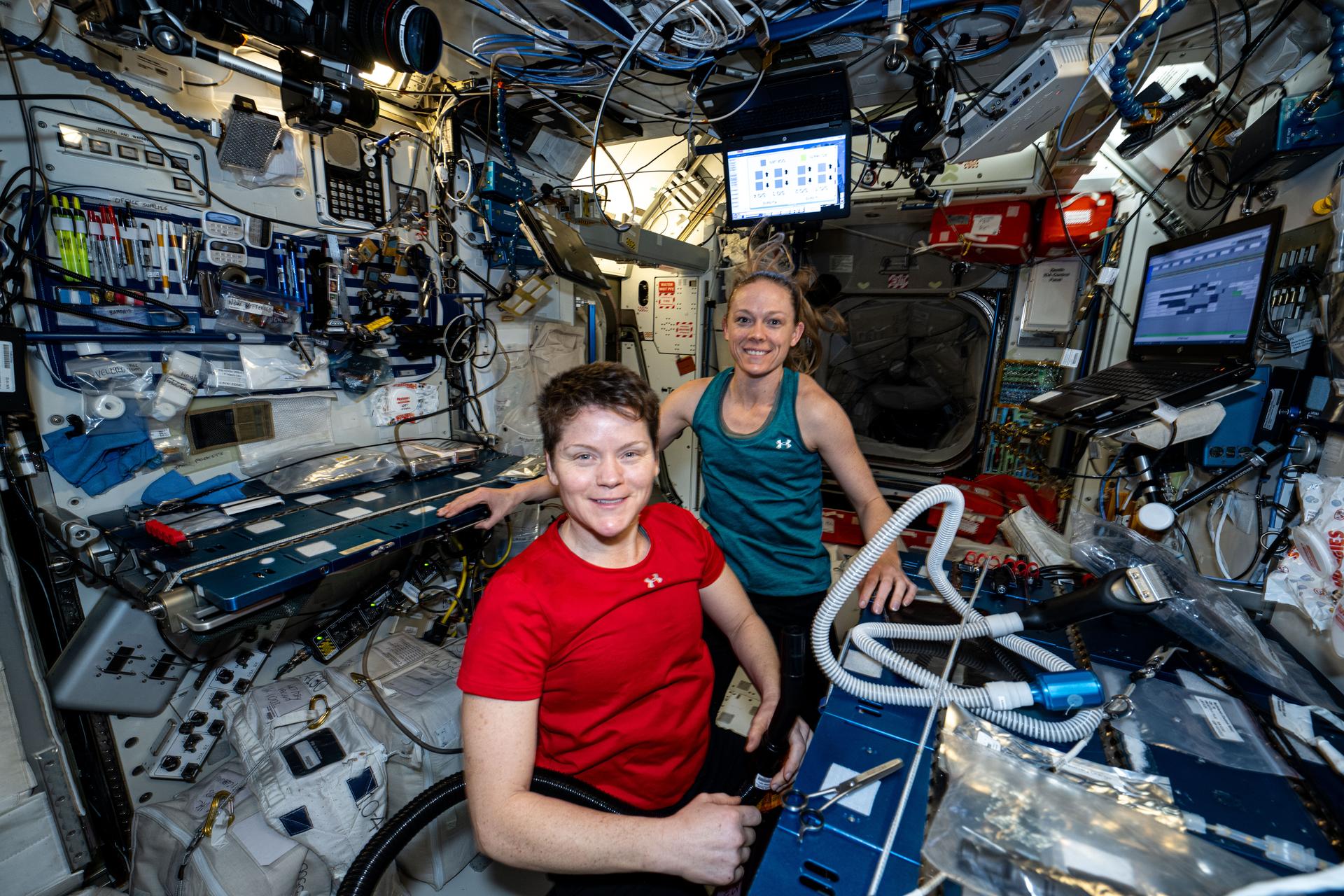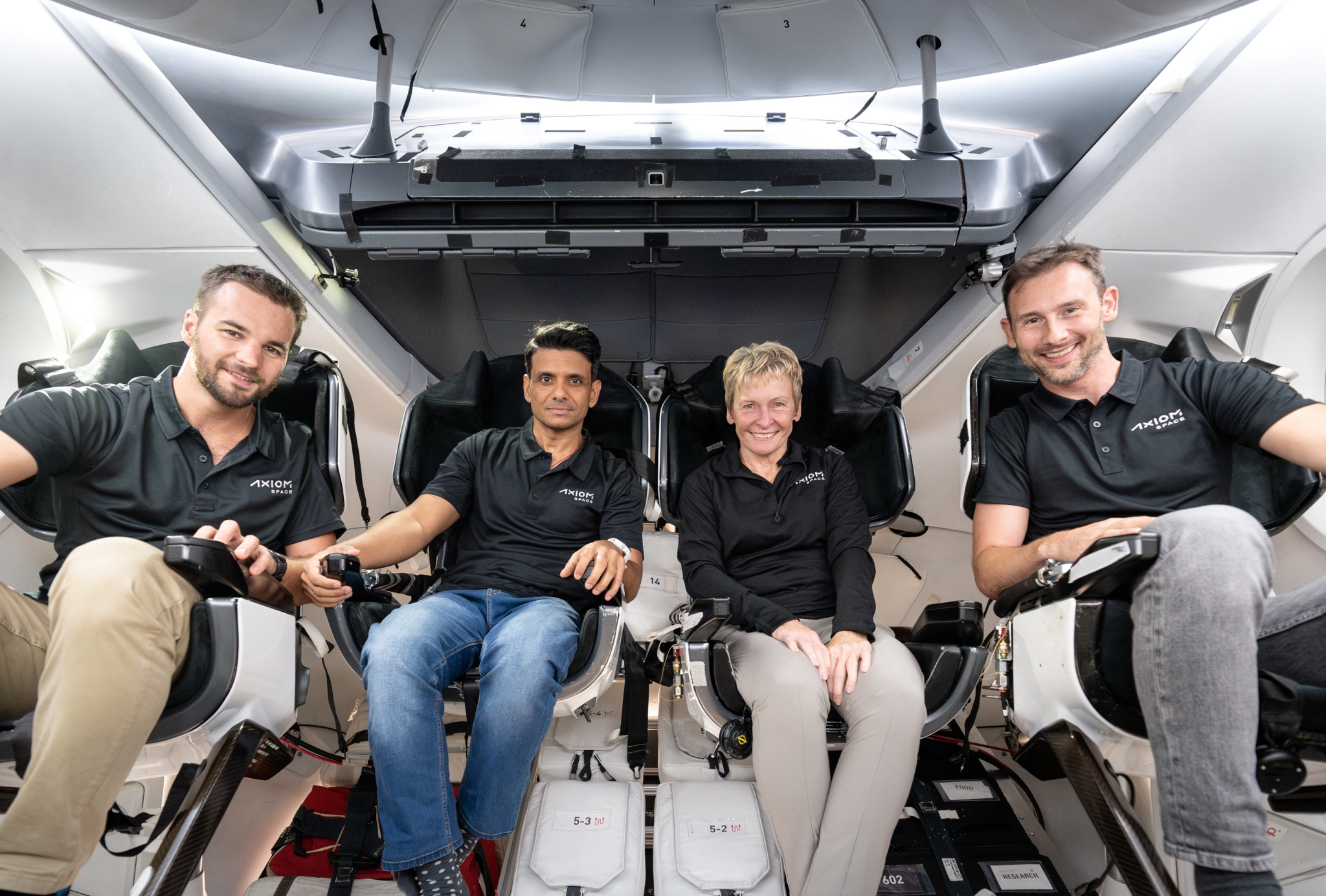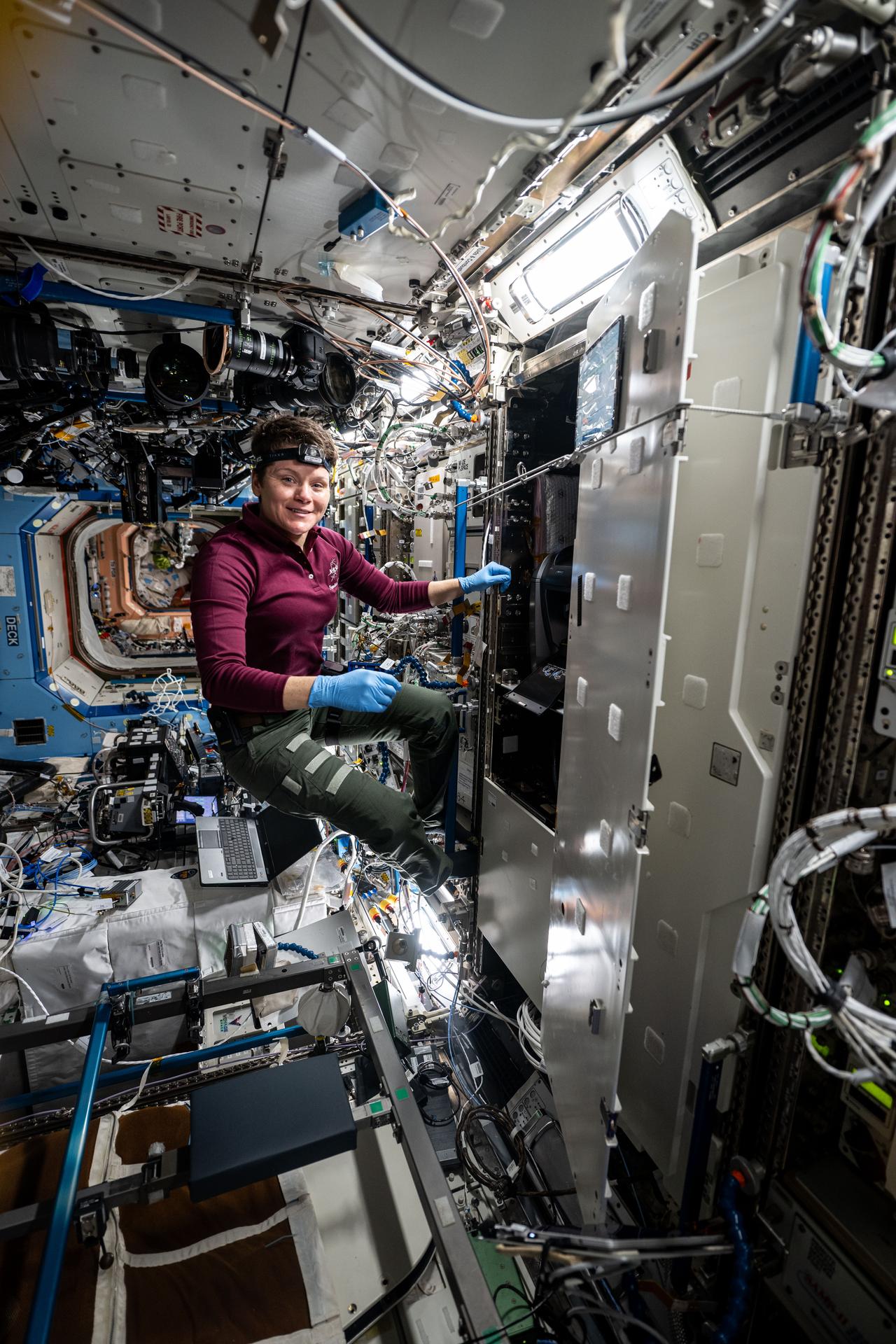Station Waits Extra Day for Axiom Mission 4 Launch, Studies Eyes and Proteins

The Axiom Mission 4 (Ax-4) crew is at NASA’s Kennedy Space Center counting down to a launch aboard the SpaceX Dragon spacecraft targeted for 8 a.m. EDT on Wednesday to the International Space Station. Veteran astronaut Peggy Whitson is commanding Ax-4 and will be flying on her fifth mission to the orbiting lab. She is leading first time space flyers Pilot Shubhanshu Shukla from India and Mission Specialists Sławosz Uzanański-Wiśniewksi from Poland and Tibor Kapu from Hungary. The four private astronauts are preparing for a two-week stay on the orbital laboratory to conduct a wide array of space research supporting human health, space commercialization, and more.
The Expedition 73 crew has had several days of Ax-4 reviews studying the mission’s profile and Dragon’s automated approach and rendezvous techniques. The orbital crewmates also readied space station systems, activated tablet computers, and installed sleep stations Ax-4 will use during its planned two-week stay aboard the station. NASA Flight Engineers Anne McClain and Nichole Ayers will be on duty monitoring Dragon as the Ax-4 quartet approaches the station for a docking at 12:30 p.m. on Thursday.
Meanwhile aboard the orbiting lab on Monday, the orbital residents’ research schedule was composed of eye checks, space physics, and Earth observations. Ongoing lab maintenance rounded out the day with spacesuit cleaning, advanced exercise gear inspections, electronics and plumbing hardware swaps, and Soyuz seat checks.
McClain, Ayers, and station Commander Takuya Onishi of JAXA (Japan Aerospace Exploration Agency) joined each other before their midday lunch and had their first set of eye exams. The trio participated in eye scans with the Ultrasound 2 biomedical device with remote guidance from doctors on the ground. The researchers were looking at the astronauts’ optic nerve, cornea, and lens to understand if microgravity is affecting their eye structure. The astronauts also got together at the end of their shift for a second set of eye checks peering into medical imaging hardware for more insight into space-caused vision issues.
Ayers began her shift in the Destiny laboratory module setting up physics research hardware inside the Microgravity Science Glovebox. The Ring Sheared Drop investigation looks at proteins in a liquid without a container for potential insights into neurodegenerative diseases such as Alzheimer’s and new space commercialization opportunities.
Onishi also partnered with NASA Flight Engineer Jonny Kim and inspected the Enhanced European Exploration Exercise Device (E4D) inside the Columbus laboratory module. The duo checked out components and greased rails and rollers to ensure the E4D’s functionality and prevent corrosion. The E4D is being tested on the station for future use on missions to the Moon, Mars, and beyond. Onishi then conducted leak checks and removed batteries from a spacesuit in the Quest airlock. Kim drained recycled water tanks and replaced hardware on the station’s bathroom located in the Tranquility module.
eteran cosmonaut and Flight Engineer Sergey Ryzhikov began his shift examining hatch seals in the station’s Roscosmos segment. Following that work, he cleaned and replaced ventilation system gear in the Poisk module then tested the functionality of communications hardware. Flight Engineer Alexey Zubritskiy transferred nitrogen from Poisk tanks then tested the operations of a 3D printer in the Nauka science module. The pair also performed a fit check of the seats they will ride in aboard the Soyuz MS-27 spacecraft when they return to Earth later this year with Jonny Kim. Flight Engineer Kirill Peskov pointed a specialized camera, called a hyperspectrometer, out a space station window and captured imagery of landmarks across Europe and Asia in visible and near-infrared wavelengths for analysis.
Learn more about station activities by following the space station blog, @space_station and @ISS_Research on X, as well as the ISS Facebook and ISS Instagram accounts.
Get the latest from NASA delivered every week. Subscribe here.
Powered by WPeMatico
Mark A. Garcia







